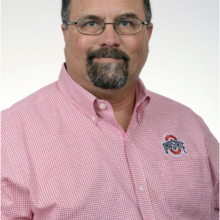IAWC M13 CAM Wrap up and CIH
Master wellness counseling techniques and integrative health practices to enhance client well-being and satisfaction.
Course Overview
Handout M13 CIH and Wellness Counseling
IAWC M13 Complementary and Integrative Conclusion
Required Reading
Required Integrative mental health and counseling
youre_needed_on_the_team_cmhcs
M13 References CAM & CIH
M13 CAM Wrap Up Quiz
08 M13 Module Evaluation

Recorded Program
Introductory
View the entire recording.
Complete the post-test with a passing grade of at least 80%
Complete the course evaluation

Ohio CSWMFT Approval
This training is approved for counselor, social work, and marriage and family therapy continuing education. In addition, it is approved by the Ohio Chemical Dependency Board for chemical dependency continuing education. Check CE Broker for detailed breakdown of CE types (provider number 50-24074).
AWSB Approval
NA- This course is not eligible for credit through the ASWB.
NBCC Approval
Mindfully has been approved by NBCC as an Approved Continuing Education Provider, ACEP No. 7322. Programs that do not qualify for NBCC credit are clearly identified. Mindfully is solely responsible for all aspects of the programs.
Individuals with comments/questions/concerns can contact Mindfully Academy via the information provided below:
513-939-0300
Charles Potter (Program Coordinator) [email protected]
Astin, J. A. (1998). Why patients use alternative medicine: Results of a national study. JAMA, 279(19), 1548-1553. [https://doi.org/10.1001/jama.279.19.1548]
Barnes, P. M., Bloom, B., & Nahin, R. L. (2008). Complementary and alternative medicine use among adults and children: United States, 2007. National Health Statistics Reports, (12), 1-23. [https://www.cdc.gov/nchs/data/nhsr/nhsr012.pdf]
Berger, C. C. (2011). Integrative mental health and counseling: Research considerations and best practices. Retrieved from http://counselingoutfitters.com/vistas/vistas11/Article_59.pdf
Berman, B. M., & Straus, S. E. (2004). Implementing a research agenda for complementary and alternative medicine. Annual Review of Medicine, 55, 239-254. [https://doi.org/10.1146/annurev.med.55.091902.103755]
Ernst, E. (2000). The role of complementary and alternative medicine. BMJ, 321(7269), 1133-1135. [https://doi.org/10.1136/bmj.321.7269.1133]
Kessler, R. C., Soukup, J., Davis, R. B., Foster, D. F., Wilkey, S. A., Van Rompay, M. I., & Eisenberg, D. M. (2001). The use of complementary and alternative therapies to treat anxiety and depression in the United States. American Journal of Psychiatry, 158(2), 289-294. [https://doi.org/10.1176/appi.ajp.158.2.289]
Lake, J., & Spiegel, D. (2007). Complementary and alternative treatments in mental health care. American Psychiatric Publishing.
Linde, K., & Jonas, W. B. (2005). Evaluating complementary and alternative medicine: The balance of rigor and relevance. BMJ, 331(7516), 224-227. [https://doi.org/10.1136/bmj.331.7516.224]
Pilkington, K., Kirkwood, G., Rampes, H., & Richardson, J. (2006). Yoga for depression: The research evidence. Journal of Affective Disorders, 89(1-3), 13-24. [https://doi.org/10.1016/j.jad.2005.08.013]
Smith, C. A., & Hay, P. P. (2004). Acupuncture for depression. Cochrane Database of Systematic Reviews, (3), CD004046. [https://doi.org/10.1002/14651858.CD004046.pub2]
Wang, C., Bannuru, R., Ramel, J., Kupelnick, B., Scott, T., & Schmid, C. H. (2010). Tai Chi on psychological well-being: Systematic review and meta-analysis. BMC Complementary and Alternative Medicine, 10, 23. [https://doi.org/10.1186/14726882-10-23]